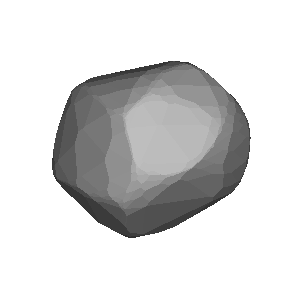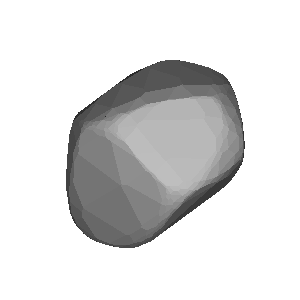2019-02-27 / 4UC 604-046006 / (186) Celuta
| # | OBS | Observer | Occ | Meth. | Instr. | CC | TSRC | UT1 | UT2 | UT3 | UT4 | UT2E | UT3E | Dur. | Chrd |
|---|---|---|---|---|---|---|---|---|---|---|---|---|---|---|---|
| 1 | show | Roland Boninsegna | O+ | VID | M406 | BE | GPS++ | 02:17:46 | 02:18:01.92 | 02:18:05.84 | 02:21:08 | 0.04 | 0.04 | 3.92 | 49.4 |
| 2 | show | John Talbot | O+ | VID | M303 | UK | GPS++ | 02:16:33 | 02:18:31.36 | 02:18:35.88 | 02:20:32 | 0.24 | 0.20 | 4.52 | 57.0 |
| 3 | show | F. Van Den Abbeel | O- | VID | M200 | BE | 02:16:59 | 02:18:59 | |||||||
| 4 | show | Eberhard Bredner | O- | VID | M254 | LU | 02:10:00 | 02:30:00 | |||||||
| 5 | show | O. Schreurs et al | O- | VID | M406 | BE | 02:16:00 | 02:20:01 | |||||||
| 6 | show | Simon Kidd | O- | CCD | M350 | UK | 02:17:00 | 02:20:11 | |||||||
| 7 | show | Jean Bourgeois | O? | VID | M200 | BE | GPS++ | 02:17:00 | 02:18:01.68 | 02:18:02.00 | 02:19:00 | 0.16 | 0.16 | 0.32 | 4.0 |
7 observations found in db: euraster
Available (probably) matching predictions (click on the link to switch):| JPL#97 : aa326045-c0a3-4dc6-93d8-30efd1e6ffef [db: observed] |
Using prediction aa326045-c0a3-4dc6-93d8-30efd1e6ffef for map and profile fit
| Ellipse and circular profile fits to the timings (chords) |
|---|
|
|
Auto-Fit Result: Ellipse profile fit was not successful. Trying circular fit. Circular diameter = 72 km From 3 chords (VID) You can enter space separated chord numbers (example: 11 4 8) or a method like VIS to ignore all visual timings, or a time source like RAD and NTP (but not GPS). If the plot disappears, then there are less than 2 chords left (too much ignored, go back with browser). Check SiMDA for size and mass data. Check Johnston Archive for satellites. |
Sky projection (artificial light) for occ. time: 2019-02-27, 02:17 UT (JD = 2458541.595)
| DAMIT | Q | P (h) | λ, β | JD0 | JD-JD0 | φ0 | Version | Modified | Vol-equiv D | Cmnt |
|---|---|---|---|---|---|---|---|---|---|---|
| # 1416 | None | 19.844 | 235°, -77° | 2.450873e6 | 7668.6 | 0.0° | None | None | not scaled | 2016-01-12 |
| # 1417 | None | 19.844 | 88°, -54° | 2.450873e6 | 7668.6 | 0.0° | None | None | not scaled | 2016-01-12 |


Image size: 300px. Transparent image background for copy & paste
| Map with groundtrack and observer stations |
|---|
| Event Details |
|---|
Occultation UUID [and DB] : aa326045-c0a3-4dc6-93d8-30efd1e6ffef [observed] Occultation Date + Time : 2019-02-27 at 02:22:23 UT +/- 0.01 min [1] Object Designation : (186) Celuta Orbit Class : MBA Star Designation : GDR3 0696887069734811904 Star Coordinates (ICRF) : RA = 09 37 06.1676, DE = +30 45 46.564 [2] Star Magnitudes : G = 13.6 mag, RP = 13.19 mag, BP = 13.85 mag Object Magnitude : V = 13.18 mag Estimated Magnitude Drop : 0.6 mag Estimated Max. Duration : 4.0 sec Object Mean Diameter : 50 km (src: astorb) Speed of the shadow : 12.6 km/s Elongation to Moon & Sun : 117° (sunlit = 44%), Sun = 153° Cross-track uncertainty : 2.0 mas = 2 km = 0.05 path-width (1-sig) RUWE and duplicate source : 0.96 mas, dup.src = 0 (0:false, 1:true) Ephemeris Reference : JPL#97 [1] time t0 of closest geocentric approach c/a, [2] including proper motion until t0 |
| More Data and Informations |
|---|
(If error 404: link not valid which means no data available)
| Aladin Sky Atlas |
|---|
| Aladin Lite direct link (has Gaia overlay) |